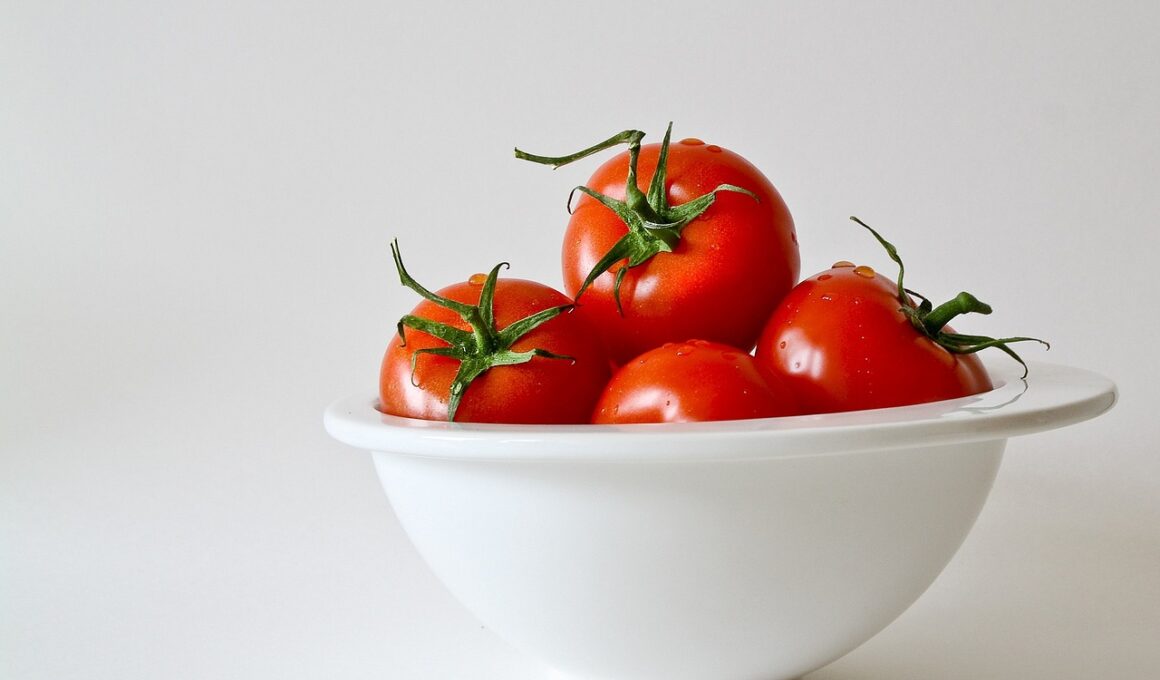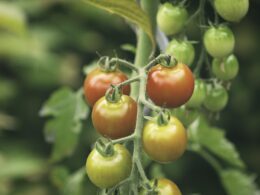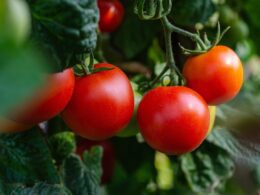Benefits of Banana Water for Tomato Plants
You’ll be amazed at how banana water can work wonders for your tomato plants, boosting their growth and overall health. Banana water is a natural fertilizer that’s packed with essential nutrients like potassium, phosphorus, and magnesium. Not only does it help promote strong root development and improve fruit quality, but it also enhances the plant’s resistance to diseases and pests. Using banana water is as easy as pie! Just soak some banana peels in a jar of water for about 48 hours, then strain out the peels and use the nutrient-rich liquid to water your tomatoes. You can even reuse the same peels several times before they lose their potency. With this simple yet effective method, you’re providing your plants with vital nutrients while also reducing waste – talk about an eco-friendly solution! So go ahead and give banana water a try on your tomato plants; watch them thrive under its nourishing care. Your plants will reward you with an abundant harvest of juicy tomatoes that are both delicious and safe to eat. Remember that by using natural fertilizers like banana water, you’re not only caring for the well-being of your plants but also ensuring the safety of your family – it’s a win-win situation indeed!How to Make Banana Water
Ready to give your plants a nutrient boost? Let’s talk about how to make banana water. First, prepare the banana peels. Simply save them after eating the bananas and remove any remaining fruit. Next, soak the peels in a jar of water for at least 24 hours. This allows the nutrients to leach out into the water. Finally, strain the liquid and store it in a container for later use. Dilute the banana water with more water at a ratio of 1:5 (one part banana water to five parts water) before using it on your plants. You’ll find that this simple process can greatly benefit your garden in no time!Preparing the Banana Peels
Once you’ve gathered some ripe peels, it’s time to start prepping them for a nutrient-packed liquid treat for your tomatoes. First, give the banana peels a good rinse under running water to remove any dirt or pesticide residue that may be lingering on the surface. Then, chop the peels into small pieces – about half an inch in size – to help them break down more easily and release their nutrients faster when soaking in water. Now that your banana peels are clean and chopped, you’re ready to make your banana water. Remember, using this natural fertilizer can not only promote healthy tomato plant growth but also ensure you’re taking care of your plants in a safe and eco-friendly manner. Your tomatoes will thank you for providing them with essential nutrients like potassium and phosphorus, while you can feel secure knowing that you’re nurturing them with an all-natural solution.Soaking and Storing the Banana Water
Now it’s time to get those peels soaking and whip up some nutrient-rich banana water for your precious tomatoes. Grab a container with a lid, fill it with water, and add the chopped banana peels you prepared earlier. Let them soak for at least 24 hours – this will allow all those wonderful nutrients like potassium, phosphorus, and calcium to leach out into the water. Once they’ve soaked long enough, strain out the peels and store your freshly made banana water in a cool, dark place until you’re ready to use it. When it comes to using your homemade banana water on your tomato plants, moderation is key. You don’t want to overdo it and cause any harm to your beloved green friends. Aim for using this nutrient-packed liquid once every two weeks as part of your watering routine – simply mix one part banana water with three parts regular water before giving it to your plants. This way, you’ll be providing them with a steady supply of essential nutrients without overwhelming their delicate systems – ensuring that they stay happy, healthy, and safe throughout the growing season.How to Apply Banana Water to Tomato Plants
Gently drench those thirsty tomato plants with nutrient-rich banana water, ensuring they receive a rejuvenating boost every two weeks. To apply the banana water, simply pour it at the base of your tomato plants, being careful not to splash any on the leaves or stems. Aim for a slow and steady flow so that the soil can absorb all those valuable nutrients without becoming overly saturated. As your tomatoes grow and thrive, you may find it necessary to adjust the amount of banana water you provide. Pay attention to their overall health and growth rate – if they seem particularly thirsty or in need of additional nutrients, feel free to increase the frequency slightly. However, always remember that moderation is key; too much of a good thing can lead to problems such as root rot or fungal issues. Keep an eye on your plants as you continue this fruitful routine and enjoy watching them flourish under your attentive care. With regular application of banana water every two weeks or so, your tomato plants will have access to essential nutrients like potassium that support healthy growth and fruit production. So go ahead and treat them well – after all, happy tomatoes make for delicious meals!Is it Safe to Put Milk on Tomato Plants as Frequently as Banana Water?
When it comes to milk application for tomato plants, it is generally safe, but not as frequent as using banana water. While milk can provide essential nutrients and act as a natural fungicide, excessive use may promote the growth of harmful bacteria and fungi. Therefore, it is advisable to apply milk to tomato plants sparingly, using it as a supplement rather than a regular watering method.









